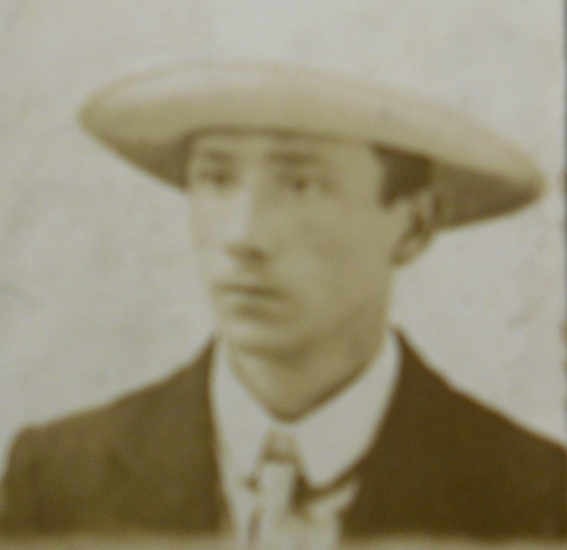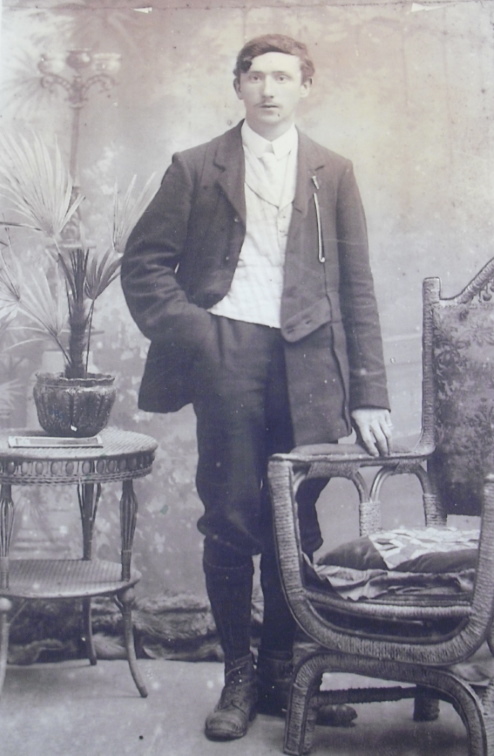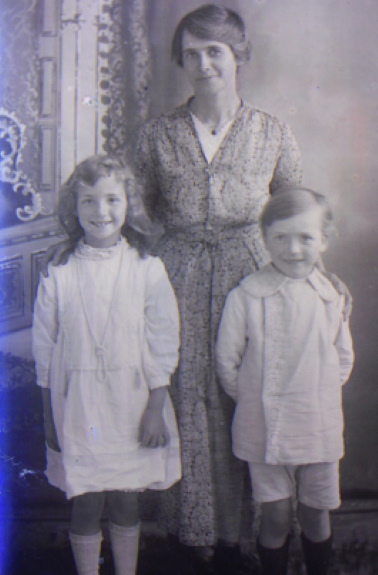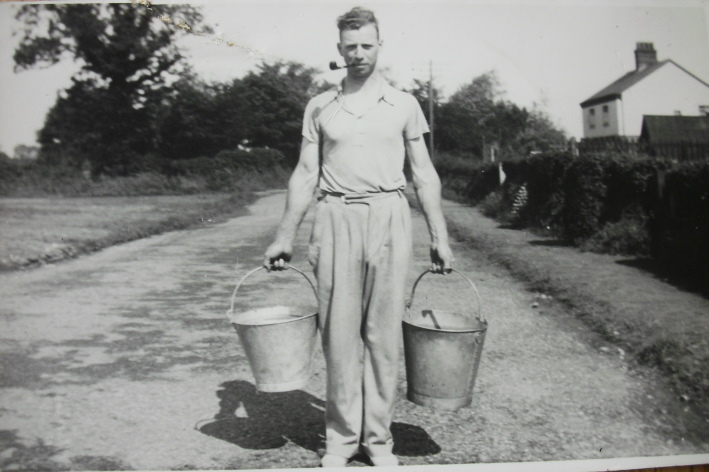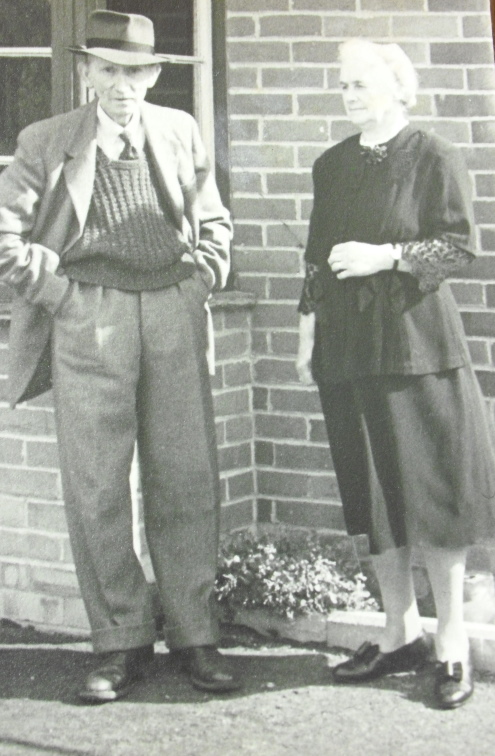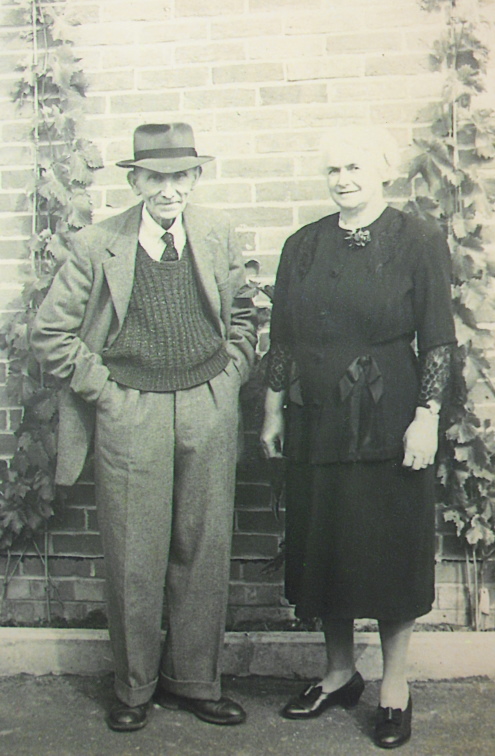What follows is a short biography of William Robert Lebbell (1884-1965), written by William’s granddaughter, Susan Fay, from her memories of her grandfather:
William Robert Lebbell aged about 17 years. Photograph courtesy of Susan Fay, granddaughter of W R Lebbell
Born & Bred in Great Ellingham
“William was born in the village of Great Ellingham in 1885, possibly at Poplar Farm in Long Street, or the cottages that stood at one time on Town Green, or even at Manor Farm on the Hingham Road, to which William’s mother’s family were connected.
He was the son of blacksmith Robert Barnard Lebbell and Mary (née Mann).
Schools
William attended the Church School on the Attleborough Road, with his sister Mary, for which his father paid (I think) the fee of 1d per week.
At aged 11, William gained a scholarship to Hingham Grammar School. This is where he gained a smattering of Latin and Greek.
Apprenticeship
After leaving school at 14, William commenced his Blacksmith Apprenticeship under his father, which took 7 years.
As a ‘journeyman’ he worked at the Town Green Smithy, shoeing horses, repairing farm machinery and smaller domestic items (for example, kettles).
Skilled in Horse Leg Fractures & Problems
William also became a skilled expert on foot problems of horses, but he was also consulted on horses leg fractures. Horses were valuable creatures. They needed to return to their farm work as soon as possible. William successfully treated one horse with a broken leg by having it suspended on webbing braces attached to (and supported by) the rafters of a large local barn, the forefeet just touching the straw bedding. This lasted one month to enable the fracture to heal (and not displace) .
Quiet Manner
William did not have the build of what one would, perhaps, usually associate with a blacksmith i.e. brawny, large and powerful. He was small – about 5ft 6 inches, slight and wiry. His eyes were brown and his hair auburn – in fact, he did not go grey until he was 70 years old! His manner was quiet. William believed it was much more important to listen and learn from that. Of course he had a pronounced Norfolk accent to the point of dialect.
William R Lebbell aged about 21 years. Photograph courtesy of Susan Fay, granddaughter of W R Lebbell
Marriage
He met my grandmother, Lily Wigby, while they were attending St James Church Sunday service. Her family had recently moved into Mill Farm in the village. Lily had worked her way up in service (kitchen duties) from aged 12 years. However, by the time William and Lily met, Lily was a cook to a stockbroker in London. She had a beau there so she had a big decision – ‘Town Mouse’ or ‘Country Mouse’! She chose the latter and they were married in St James’s Church on the 1st January, 1908.
Timberhill
They began married life at Timberhill (the area at the crossroads of Deopham Road and Church Street). They rented the house behind the small layby area. This was because that in the enclosed yard area, there was another blacksmiths shop. William plied his trade from there for a while. Owen (their eldest son) was born in this house.
Lily Lebbell (née Wigby) with son Owen c.1911. Photograph courtesy Susan Fay
Move to Poplar Farm
However, soon after that William’s mother died, so William and Lily moved to Poplar Farm to look after his father. This farm had about 30 acres, but they rented about 100 more close by.
William Robert Lebbell 1917. Photograph courtesy Susan Fay, granddaughter of W R Lebbell
‘Call-up’ Papers
William and Lily had five children in six years. In 1917, William received his ‘call-up papers’. He undertook six weeks’ army training in Scotland where he caught rheumatic fever. The living conditions were poor – the ‘bell tents’ had no groundsheets. This disease weakened his heart for the rest of his life. However, in the 1920s he tried taking the waters at Bath, but to no avail.
Lily’s Appeals
After William had left Great Ellingham to start his military service, Lily was in desperate need of help on the farm. She was trying to cope with five children under nine, and only the elderly Robert to help. She pleaded with the army to let William come home. Lily had to appeal every month to ensure William was there to help with ploughing, sowing, harvest etc. These appeals were successful – William never saw active service.
After WW1 farming continued, but blacksmithing was in decline.
Lily Lebbell wife of William R Lebbell, with sons Owen, Dick and Louis c.1917. Photograph courtesy Susan Fay
Lily Lebbell (née Wigby) with children Lily and Claude c.1920. Courtesy Susan Fay
Family Farm Life
As William and Lily’s five children grew up, they each had responsibilities on the farm. In the 1920s and 1930s these were:
- Owen: Five horses, all Suffolk Punch types
- Claud: 20 Cows, all British Shorthorns
- Louis: One pig
- Dick: Small flock of Suffolk sheep
- Lily (with her mother, Lily): milk round, cream and butter
William’s wife, Lily, also had the responsibility of the fowls (geese, hens, ducks, turkeys – the black variety).
Louis Lebbell (son of William & Lily Lebbell) with pails of milk in Long St c.1932. Photograph courtesy Susan Fay
The family usually had three dogs at any one time; the most famous being ‘Gyp’ and ‘Felstead’ who were collies.
Later, the family had a ‘Ford T’ truck and a tractor.
Louis Lebbell cultivating on Poplar Farm c.1936. Courtesy Susan Fay
Northern Lights
I also recall that my grandparents told me that in the 1930s, the winters were usually ‘freezing cold’ and the summers were generally hot. Every winter, the Northern Lights (the Aurora Borealis) were visible from Great Ellingham.
Ice-skating on Scoulton Mere
Also in the winters, lots of people from the village went ice-skating on Scoulton Mere, including members from my family. On one particular occasion, William skated too near some trees. The ice gave way and he fell in the lake with water up to his chest. The family hauled him out – one of his ‘nine lives’ was lost that day!
Word War 2
WW2 arrived. William recalled an incident. The city of Norwich was bombed heavily one night. The fire was so bad that one could see the flames from Great Ellingham! William was so shocked by this he accidentally put his head clean through the glass of a back bedroom window at Poplar Farm! Fortunately, he didn’t even get a scratch as a result.
William also built an air-raid shelter in the back garden, which the family retreated to when the siren sounded.
Farming continued throughout WW2.
Sale of Farm
However, in 1946 they could no longer make a living and the farm was sold. It was a sad day when the last dairy cows went.
Stonehenge c.1960, the home of William & Lily Lebbell. Seated to the right are Lily Lebbell and Lily Dring née Lebbell. Courtesy Susan Fay, granddaughter of William & Lily Lebbell
‘Stonehenge’
After this William retired. The bungalow named ‘Stonehenge’ was built behind the Long Street Smithy site. The previous cottages (built of clay lump) on the site had to be demolished as they had become dilapidated.
William Robert & Lily Lebbell c.1955. Courtesy Susan Fay
Retirement
Even after retirement William continued to be active. He was on the Wayland Rural District Council, the Clerk to the Parish Council, a member of the Recreation Committee and a Trustee of the Fuel Charity in the village.
William and Lily Lebbell at Stonehenge c.1955. Courtesy Susan Fay
‘Rural Polymath’
Right up until the end of his life William was busy. He kept a good vegetable garden, was a competent beekeeper, fruit tree grafter, clock repairer, rick-thatcher, and woodcarver: one could say a ‘rural polymath’.
Fatal Heart Attack
Lastly, I need to mention his demise. Unusually, he died outside after suffering a fatal heart attack whilst sawing wood at his saw-bench in the back garden. My grandmother, Lily, found him but could do nothing.
William’s Coffin ‘rested’ in the Blacksmith’s Shop
Lebbell’s Smithy in Long Street/Town Green. Courtesy Susan Fay
At William’s request, his coffin was put in the blacksmiths shop (which still stood near to William’s home ‘Stonehenge’) until the funeral. William is buried in an unmarked grave in St James’s Church, outside under the Lady Chapel.“
Susan Fay. April, 2021
